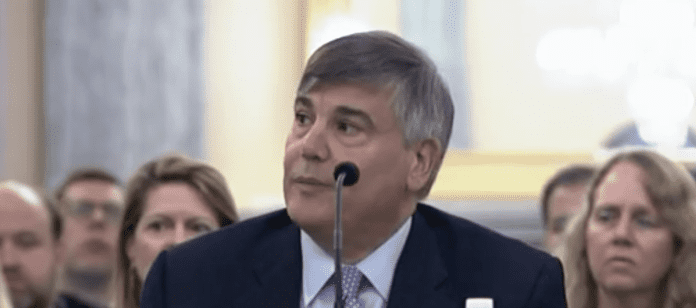Senator says the U.S. is ‘already behind’ China on 5G
U.S. Senator John Thune (R-S.D.), chairman of the Committee on Commerce, Science and Transportation, this week heard from industry experts on how to best support the spectrum needs of 5G deployment. He emphasized the economic need for the U.S. to be a global leader in the next-generation of cellular.
Kicking off the July 25 hearing, Thune said, “The 5G evolution is upon us. The race to lead the world in 5G has begun. It’s a race we must win but by many accounts we are already behind China and other nations in key areas.” He said 5G is estimated to create $275 billion in new investment, $500 billion in economic growth and 3 million new jobs. “We have the technology. But that is only part of the equation—spectrum and deployment are critical.”
Thune acknowledged the 2017 low-band incentive auction overseen by the U.S. Federal Communications Commission and planned auctions of millimeter wave frequencies, but pressed the point that mid-band spectrum is an important part of deploying 5G. “With regard to mid-band spectrum,” he said, “The United States is falling significantly behind.” He called the FCC’s consideration of shared access to the 3.5 GHz Citizens Broadband Radio Service (CBRS) band “novel.”
The committee heard testimony from Meredith Baker, president and CEO of CTIA, Dean Brenner, Qualcomm SVP of Spectrum Strategy and Technology, Charter Communications SVP of Wireless Technology Craig Cowden and Tom Stroup, president of the Satellite Industry Association.
Baker highlighted how 5G can support widespread enterprise and industrial innovation that will touch communities throughout the country. “The key to me is what 5G enables,” she said. “Pick an industry in your state…pick a constituency that needs something. 5G will help enable innovative new solutions from tele-health to precision agriculture. We don’t want Uber for health care to start in China.”
Low-, mid-, high-band, licensed, unlicensed or shared, the industry needs all of it for 5G, Brenner told the senators. “We’re working on 5G at a feverish pace to use each and every sliver of spectrum to deliver the kind of wireless connectivity you can only dream about today. But it all comes back to that steady stream of new spectrum.”
Brenner said Qualcomm estimates that by 2035 5G could create more than $12 trillion worth of goods and services, which reiterates the need for a proactive policy approach from lawmakers.
To watch a video of the nearly three-hour hearing, click here.

